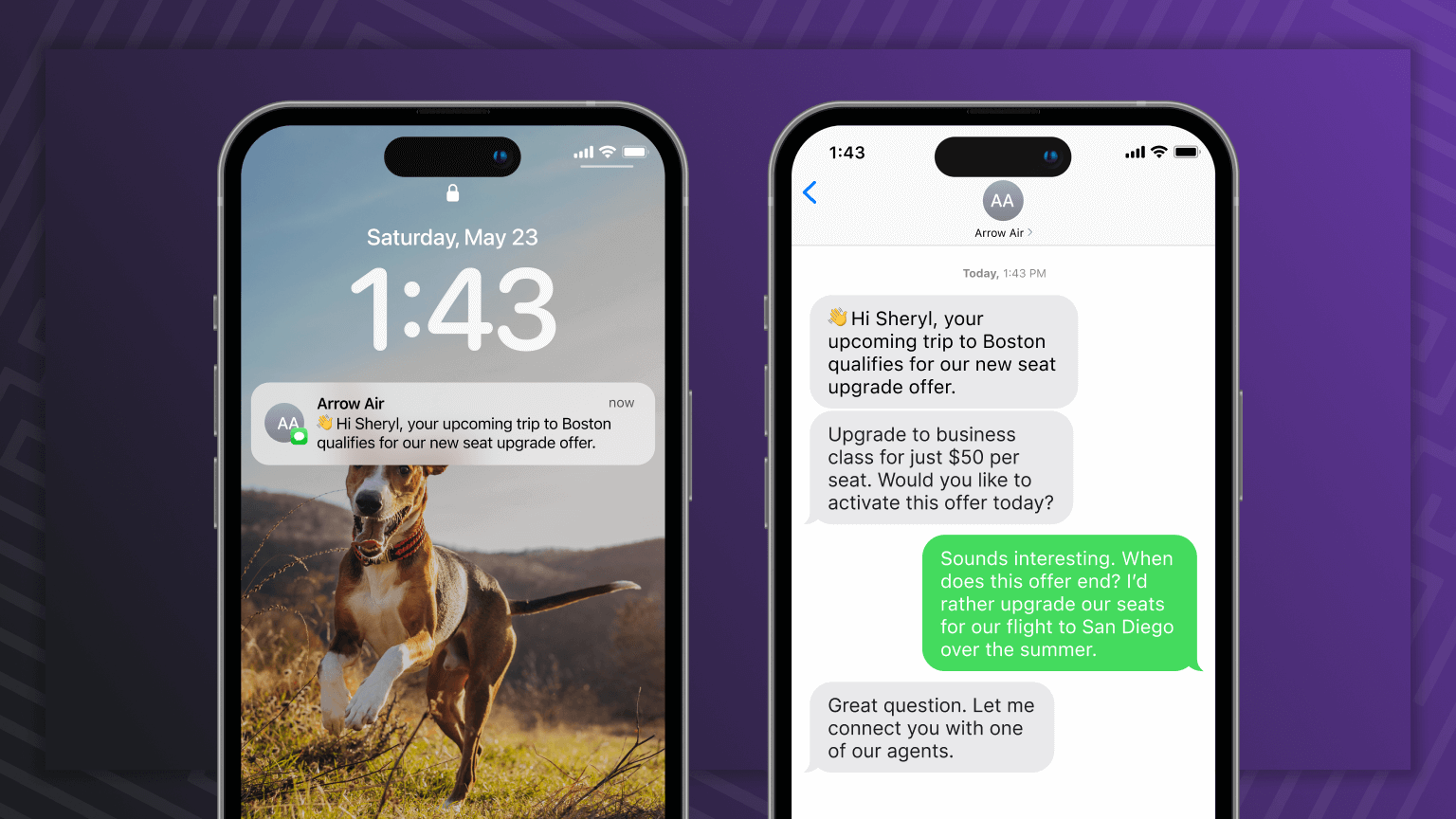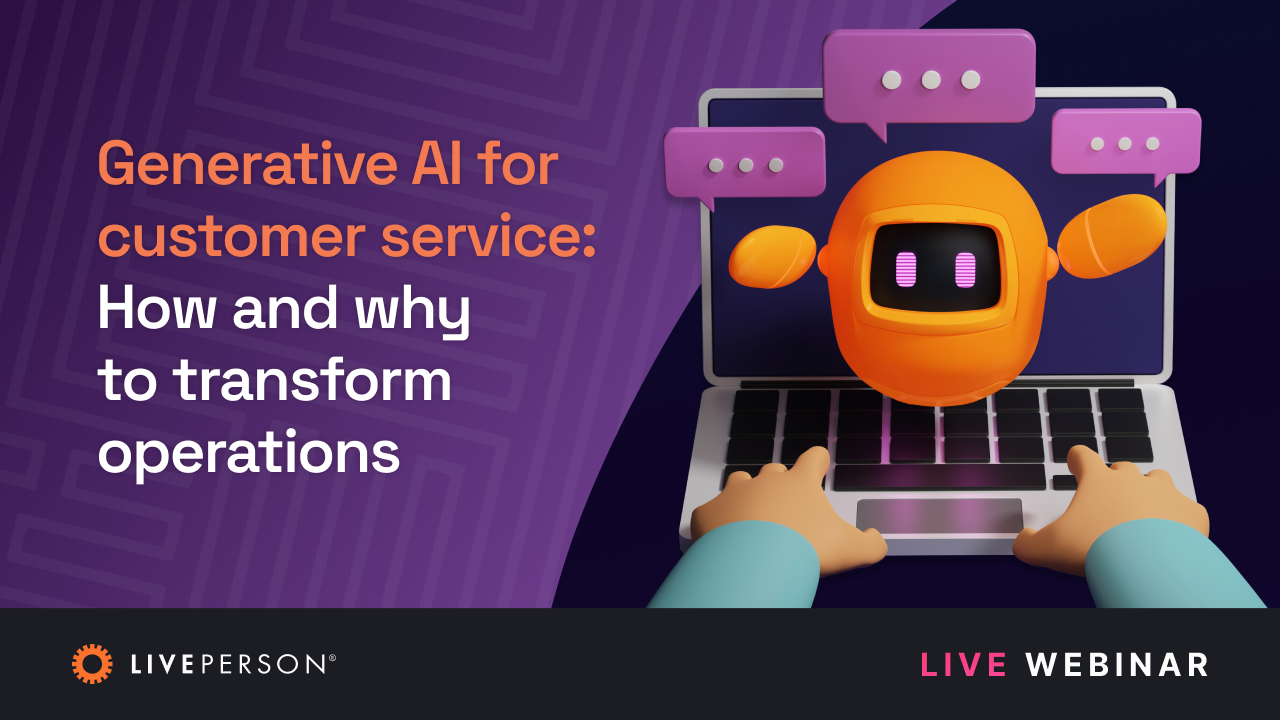article
Take flight with AI: An airline digital transformation journey
How to offer passengers the best conversational experience
November 05, 2024 • 6 minutes

More often than not, conversations with airline customers are straightforward. Consumers want to know what a flight entails, what costs are incurred, and to be ensured of their safety — and likely not in that order. Modern-day travel requirements are just that — modern — and to this end, the aviation industry is beginning to adopt digital strategies to “meet customer expectations, regulatory requirements, and their own growth ambitions, while some continue to work on outdated legacy systems,” according to Deloitte.
Successful airline digital transformation solutions aren’t just related to flight planning, reducing fuel consumption, or passenger safety. Digital advancements in communication also need to be included to streamline the customer experience. After all, meeting customer expectations can be tough. Our research reveals that 73% of consumers say they are more critical of how businesses interact with them today compared to a year ago. Add to that, people’s relationships with airlines are often personal. Many customers participate in loyalty programs to rack up miles, and everyone loves a good viral story about lost stuffed animals returned to their owners.
Increasingly, airlines are putting digital transformation at the core of their customer experience, moving customers off the phone and into the messaging channels they frequent. This is a move that benefits everyone, and it makes customer conversations far more meaningful and actionable. Let’s take a look at our Conversational Flywheel™, a proven framework for driving continuous improvement across your conversational journey. This framework includes four distinct phases for improving customer engagement and operational efficiency with the help of AI and digital technologies.
1. Leverage data analytics to understand what customers want
Deloitte referred to the airline industry focus on meeting customer expectations, but that’s a move that requires you to truly understand customer intent — actual words customers use to speak with you. It’s important to identify and act upon issues that customers commonly bring up. A successful digital transformation in aviation will use this conversation intelligence to plan what tasks can be automated, where they can insert more personalization, and where they need to streamline operations.
When it comes to air travel, questions about seat assignments and upgrades top the list, accounting for 12.85% of airline industry-related inquiries. This was followed by questions about miles and credit (12.02%) and baggage (11.58%). Next in line were questions about booking and changing flights. Further down the list were questions about cancellations and delays. Ultimately, customers want up-to-the-minute information about their flights, and there’s ample room to leverage AI to help with these conversations.
2. Connect channels and aviation industry systems
When customers want to talk to your brand, it’s beneficial to move them from expensive phone calls to the digital channels customers prefer. This omnichannel messaging approach can include your mobile app, website, SMS, social media platforms, or messaging apps. Our 2024 research reveals that airlines typically engage with customers across an average of five channels.
You can elevate these conversations by integrating your conversational platform with your existing customer relationship management (CRM) software, customer data platform (CDP), and telephony systems. Integrating digital systems provide your agents with a more complete customer view, and enables them to provide a truly connected and personalized experience. In fact, 76% of consumers want the option to seamlessly switch between calling and messaging, depending on their in-the-moment preferences.
Tip: LivePerson’s voice-to-digital components empower you to transform traditional CCaaS solutions, helping create a unified platform for agents to better understand and respond to customer needs across channels.
3. Assist agents and boost productivity with the right digital technology
Customer support agents have a wealth of tools at their disposal, but it can get overwhelming. Continue your work by integrating digital technology and contact center solutions that will make their jobs easier. For example, generative AI tools can boost agent efficiency, helping answer passenger inquiries quickly and accurately every time. When agents feel supported, the impact is felt across the customer experience — conversation duration is reduced, agent response time is faster, and customer satisfaction increases.
It’s not surprising that one in two consumers say they’ll consider switching to a competitor if they wait on hold longer than 10 minutes. Yet 17% of travel leaders say that putting customers on hold for more than 10 minutes is acceptable. Clearly, there’s a disconnect here.
4. Automate for continuous improvement
There are many ways AI and automation can support your airline digital transformation. You can help more customers in less time by building safe, compliant automation flows to handle the issues that represent top customer intents, allowing human agents to focus on more complex or sensitive tasks. Empowering customers to self-serve sets you up for providing resolutions at scale.
Automation is not just about efficiency; it’s about expanding your conversational data pool in leaps and bounds, feeding back into your understanding of customer intent and creating a self-reinforcing cycle that constantly elevates the aviation industry customer experience. 80% of Gen Z says their brand loyalty would increase if they could communicate with an automated service for faster service. And travel leaders are listening — in fact, 59% say they are prioritizing messaging with AI over phone calls for emails and customer service.
Airline digital transformation in action: Azul Airlines
Azul Airlines, which boasts the highest number of takeoffs and cities served in Brazil, switched from traditional chat to an asynchronous conversational customer service model to maximize efficiency. Within 10 months of using conversational AI, the airline saw an 84% reduction in first-contact abandonment, a 42% increase in conversations conducted by human customer service messaging agents, and 59% of new conversations resolved using AI within the bot itself.
The efficient customer communication solution provided significant gains in service levels in under a year, getting airline customers the information they needed, faster. The goal wasn’t to replace human conversations with new technologies; instead Victor Brancati, Business Solutions Manager at Azul explained:
“We use technology to improve the performance of Azul’s customer service teams. Our solution indicates to the team members which customer concerns they should prioritize, which customers are online and active, and what problem resolution suggestions are identified by artificial intelligence. As a result, both customer service and problem resolution take less time and have higher success rates.”
Help your customer conversations take flight
Your airline digital transformation journey can begin now with LivePerson’s Conversational Cloud® and omnichannel messaging platform that allows you to personalize customer conversations at each phase of the customer journey. The future of customer service may be AI-powered, but ultimately it’s about the content of the customer conversation that will drive your business forward.





